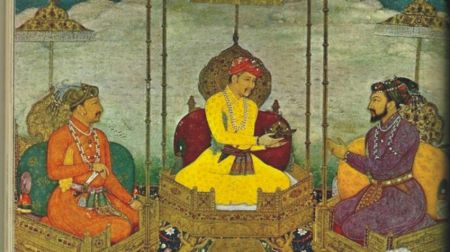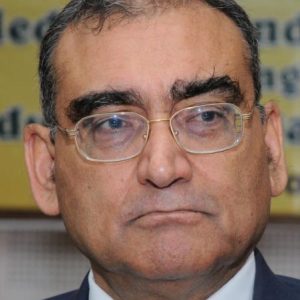Reuniting India, Pakistan, and Bangladesh for a Shared, Prosperous Future
INDIA, PAKISTAN AND BANGLADESH are one country, and are bound to reunite one day under secular, patriotic, and modern-minded leaders. The belief in the unity of the Indian subcontinent—encompassing India, Pakistan, and Bangladesh—is rooted in the shared culture, language, and history of its people.
This unity, forged over centuries, was disrupted in 1947 with the Partition, a British swindle orchestrated under the pretext of the two-nation theory. This theory, which posited irreconcilable differences between Hindus and Muslims, served as a colonial strategy to weaken the region’s political and social fabric.
A Shared Linguistic and Cultural Heritage
Hindustani, a language that bridges communities across India, Pakistan, and Bangladesh, remains a testament to their shared heritage. While labeled differently—Hindi in India and Urdu in Pakistan—its widespread use underscores the interconnectedness of the subcontinent’s people. Festivals, food, music, and art continue to transcend borders, creating bonds that defy political divisions.
 Historical accounts show that this cultural cohesion was strongest during the Mughal era, particularly under Emperor Akbar, whose policy of Suleh-e-kul, ie religious tolerance and inclusivity laid the foundation for a unified subcontinent.
Historical accounts show that this cultural cohesion was strongest during the Mughal era, particularly under Emperor Akbar, whose policy of Suleh-e-kul, ie religious tolerance and inclusivity laid the foundation for a unified subcontinent.
Akbar’s administration brought together people of diverse backgrounds, fostering a sense of belonging that endured for centuries. He is rightly remembered as the true Father of the Indian subcontinent—a stark contrast to Gandhi and Jinnah, whose actions played into the divisive hands of the British.
The Partition: A Colonial Conspiracy
Partition, a swindle by colonial powers, was implemented through the British agents and the propagation of the bogus two nation theory. Gandhi and Jinnah, often hailed as pivotal figures in the independence movement, are critiqued for their roles in facilitating the British agenda. The creation of Pakistan, comprising Punjab, Sindh, and Balochistan, fractured a region with a history of unity, reducing it to a shadow of its former self.
 The trauma of Partition remains unparalleled. Families were torn apart, millions were displaced, and communal violence claimed countless lives.
The trauma of Partition remains unparalleled. Families were torn apart, millions were displaced, and communal violence claimed countless lives.
Yet, amidst the chaos, the inherent unity of the subcontinent’s people persisted. Diaspora communities exemplify this unity today, as Indians, Pakistanis, and Bangladeshis abroad interact seamlessly, often reminiscing about a time before the artificial divisions of 1947.
What is Pakistan? It is Punjab, Sindh, and Balochistan. These were all part of India since the time of Mughal Emperor Akbar. Indians, Pakistanis, and Bangladeshis living abroad socialize and intermingle as if no Partition ever took place.
Partition in 1947 was a British swindle, based on the bogus two-nation theory, using Gandhi and Jinnah as their main agents. It was the biggest tragedy of India in our 5,000-year-old known history.
A Vision for Reunification
The call for reunification is not merely an idealistic dream but a pragmatic vision for a stronger and more cohesive subcontinent. Economically, socially, and politically, the artificial boundaries have hindered progress. The subcontinent’s shared resources and collective potential remain underutilized due to mistrust and hostilities.
 The path to reunification lies in fostering secularism and modernity while dismantling the remnants of colonial influence. A new leadership, free from the divisive politics of the past, must rise to guide this vision. This reunification would not only restore historical unity but also set an example for the world on overcoming divisions.
The path to reunification lies in fostering secularism and modernity while dismantling the remnants of colonial influence. A new leadership, free from the divisive politics of the past, must rise to guide this vision. This reunification would not only restore historical unity but also set an example for the world on overcoming divisions.
Since India and Pakistan are one country, if an Indian soldier shoots at a Pakistani soldier or civilian, he is a traitor since he is shooting at his own countryman, and so should be given harsh punishment.
Similarly, a Pakistani soldier who shoots at an Indian soldier or civilian should be given harsh punishment as he is shooting at his own countryman. It is high time Indians, Pakistanis, and Bangladeshis know the truth.
The Truth Must Prevail
The time has come for the people of India, Pakistan, and Bangladesh to acknowledge their shared past and envision a united future. As highlighted, the bonds of culture, language, and history far outweigh the narratives of division. It is through this recognition that the subcontinent can heal from its tragic Partition and move toward a brighter, unified tomorrow.
 People living in the Indian subcontinent—i.e., those in India, Pakistan, and Bangladesh—must realize that they are not each other’s enemies. Rather, they are one, and their common enemy is poverty, unemployment, hunger, lack of proper healthcare, and good education, among other issues.
People living in the Indian subcontinent—i.e., those in India, Pakistan, and Bangladesh—must realize that they are not each other’s enemies. Rather, they are one, and their common enemy is poverty, unemployment, hunger, lack of proper healthcare, and good education, among other issues.
Also Read: India is turning Nazi
Therefore, they must unite and launch a mighty, historical people’s struggle to transform the Indian subcontinent from a poor, backward region into a modern industrial giant, like China or the USA, with its people enjoying a high standard of living and leading decent lives. ![]()
Also Read: Unveiling the Reality of ‘Democracy’ and ‘Secularism’ in India
Disclaimer : PunjabTodayNews.com and other platforms of the Punjab Today group strive to include views and opinions from across the entire spectrum, but by no means do we agree with everything we publish. Our efforts and editorial choices consistently underscore our authors’ right to the freedom of speech. However, it should be clear to all readers that individual authors are responsible for the information, ideas or opinions in their articles, and very often, these do not reflect the views of PunjabTodayNews.com or other platforms of the group. Punjab Today does not assume any responsibility or liability for the views of authors whose work appears here.
Punjab Today believes in serious, engaging, narrative journalism at a time when mainstream media houses seem to have given up on long-form writing and news television has blurred or altogether erased the lines between news and slapstick entertainment. We at Punjab Today believe that readers such as yourself appreciate cerebral journalism, and would like you to hold us against the best international industry standards. Brickbats are welcome even more than bouquets, though an occasional pat on the back is always encouraging. Good journalism can be a lifeline in these uncertain times worldwide. You can support us in myriad ways. To begin with, by spreading word about us and forwarding this reportage. Stay engaged.
— Team PT

